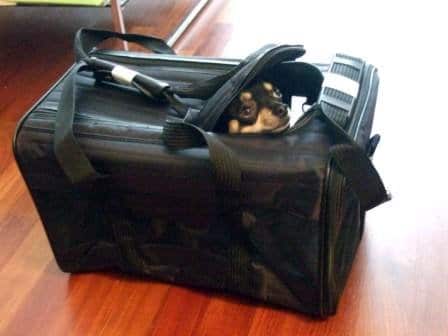To travel with an animal has its own rules well codified, even though the reality is shifting a little from place to place, from one means of transport to another host with permissions that are being extended (course for small animals). Before you go to a place it is always good to ask if the animals are welcomed and to what extent.

The more difficult is of course the transfer abroad, for which it is advisable to have all the specific provisions on health requirements requested by contacting your veterinarian, to the appropriate Veterinary Services of the Municipality, to your travel agent, if not directly to the Consulate of the country where you go or at the point of embarkation. Sometimes you will encounter in temporary operating measurement changes that are totally unexpected. I would suggest you to opt for pet travel insurance because you might need to pay for the vet and treatment abroad. You should usually take a certificate stating the “animal clinically healthy” (signed by the veterinarian with a validity of 30 days from the date of issue) and a certificate of rabies vaccination (not more than 11 months) or possibly of other vaccinations, like the one against filaria etc …
Transportation Means
By car
Small dogs and cats must travel in the appropriate “carriers.” You ought to impede the guide for the big or hunting dogs, they should be placed behind a “network partition”.
By train
The small animals, of course do not give trouble since they can travel if kept on a leash and muzzle next to the master or even in the “carriers”. The large animals pay a reduced rate of second class. If you are traveling in sleeper compartment then it needs to be intended for exclusive use. But do pay attention to the “restrictive regulations on high-speed trains.”
By plane
They are permitted (but not always) only one small pet per class, but if you exceed the carrier of 10 kg per animal you will be “in the hold”, always with less expensive tickets.
By boat
In ferries there are allowed only small dogs with leash and muzzle, animals of medium and large size are placed in the “on board dog.” On ships they do even exclude animals of medium and large size.
Photo: PetRelocation














